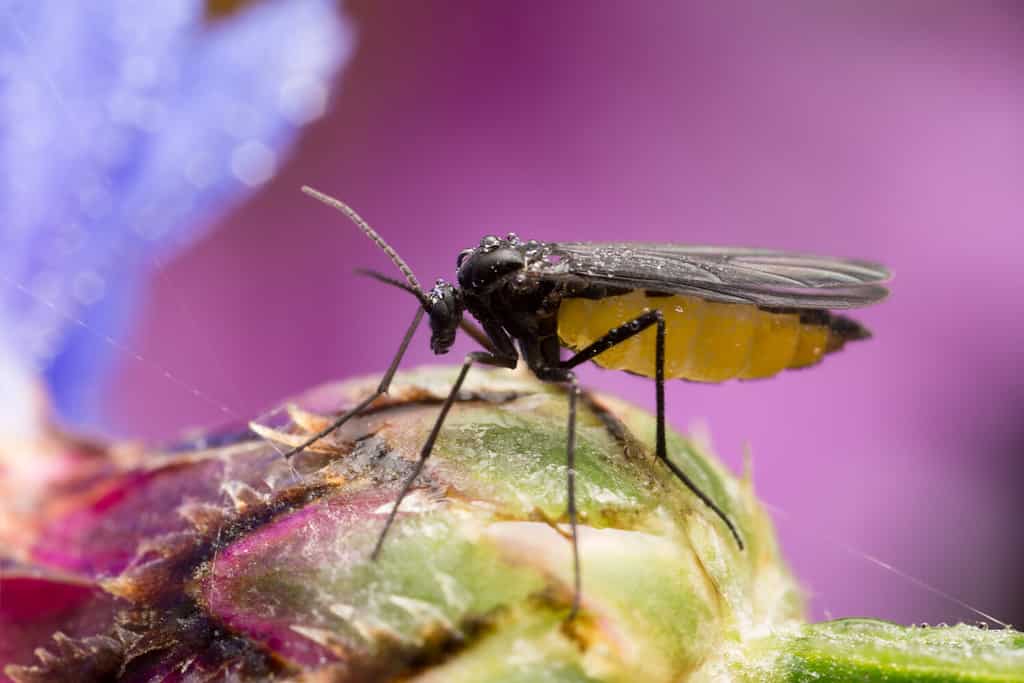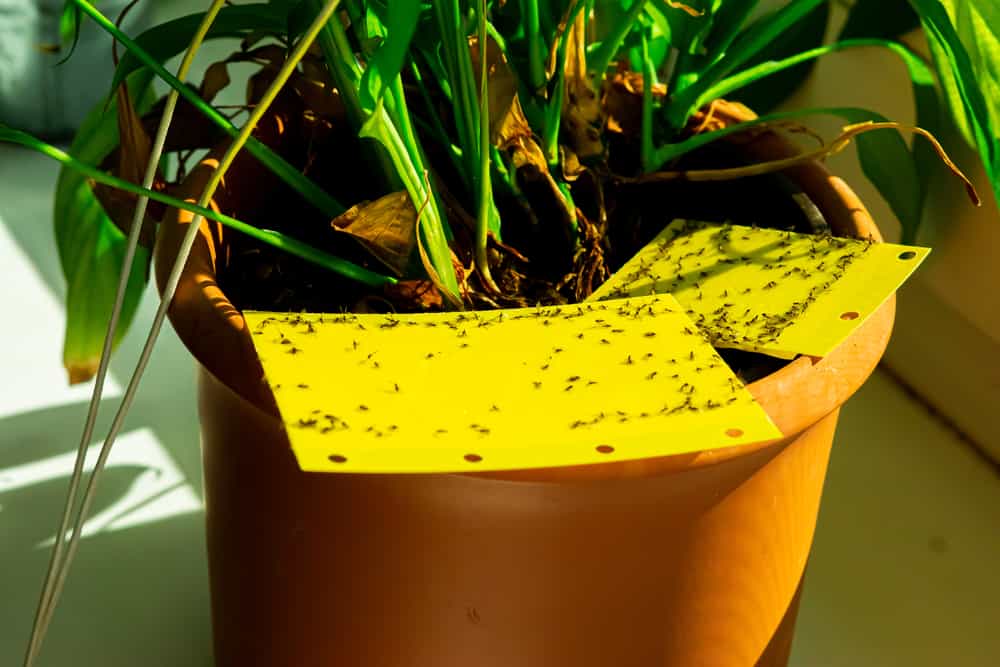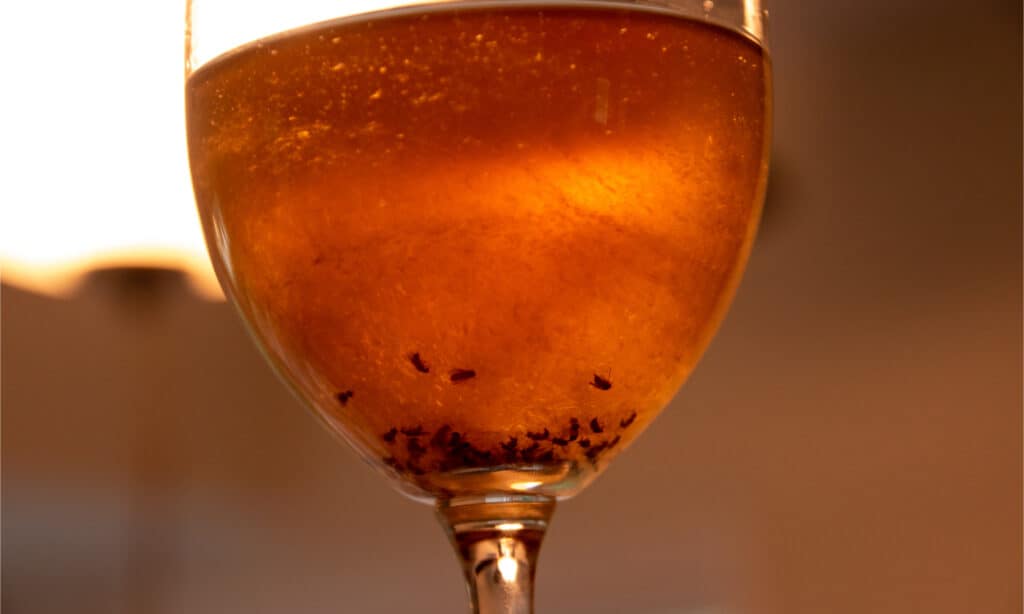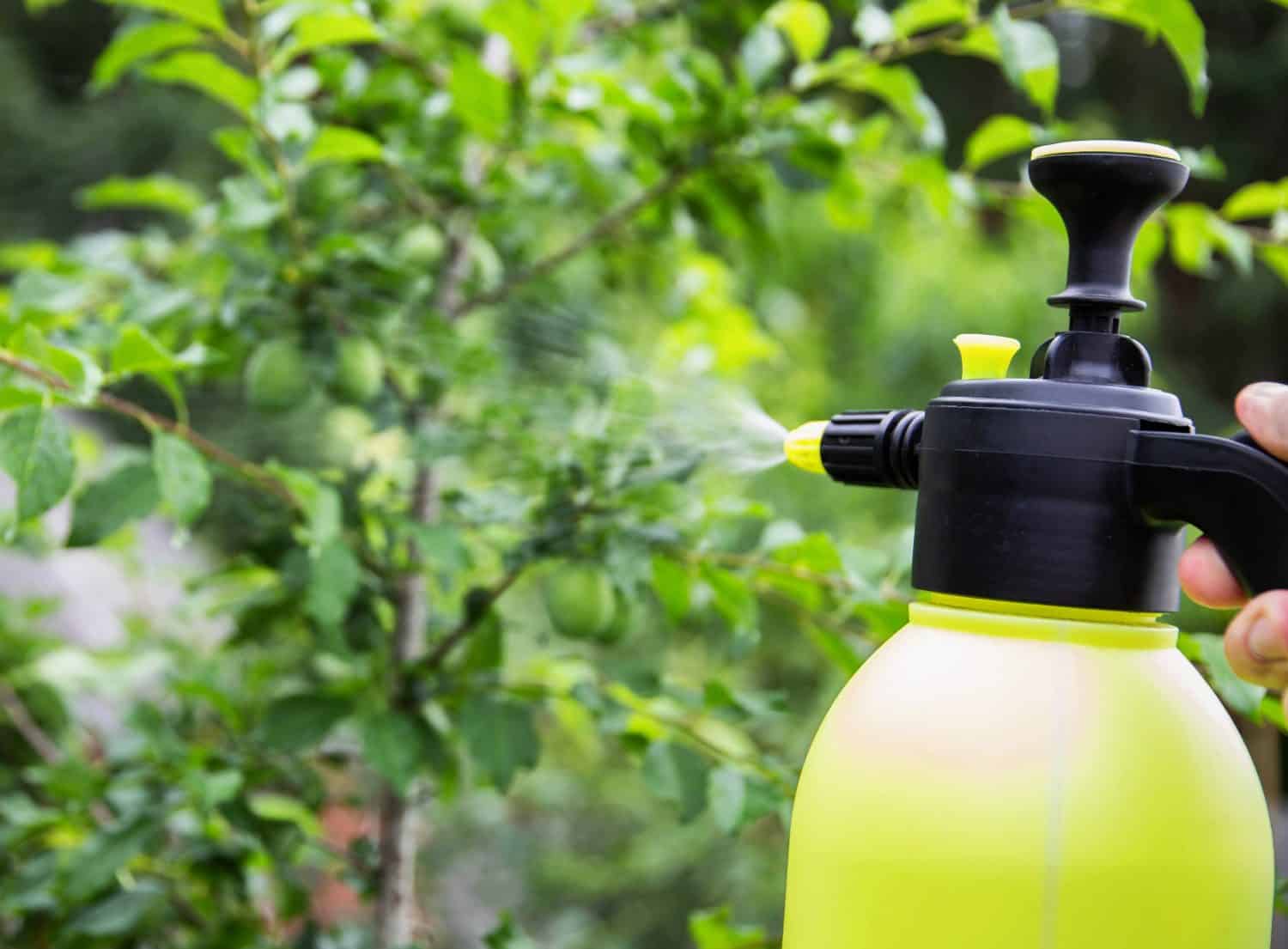Bzzzzzz . . . That is probably one of the worst noises you can hear, especially when it is near your beloved houseplants! One main culprit of this is gnats, which are one of the most common houseplant pests.
Dealing with pests, especially those that prey upon plants in our home can be difficult. Many people want to maintain a level of “low toxicity” in their homes, meaning that many traditional pesticides would be too harsh! Likewise, they also want a solution that will work effectively while being natural.
Striking the perfect balance between low-chemical pest solutions and effective pest solutions can be hard to do. Don’t worry though, we’ve compiled a comprehensive list of some of the best natural remedies for gnats in your home and on your plants!
What Are Gnats
To understand what remedies are best for you, we must first discuss what gnats are in general. Speaking biologically, gnats is simply a name to describe non-biting flies, which covers many species. With that said, many gnats that homeowners deal with are of a specific variety, such as fungus gnats, which are the most common for plant owners to deal with.
Gnats have a pretty typical insect life cycle, consisting of multiple stages including egg, larvae, pupa, and adult. For fungus gnats (the ones that affect house plants), adults will lay eggs in the soil of your plants. After hatching, the larvae rummage around the soil, eating fungi, decaying matter, and even plant roots.
Unfortunately, due to their eating habits, fungus gnat larvae can be extremely harmful to your houseplants.
What Plants Do Gnats Attack
For the most part, gnats aren’t too picky in terms of what plants they prey upon. They rely on the contents and moisture of the soil for the majority of their reproduction and feeding needs. Thus, most plants are prone to gnat attacks.
Some plants can be extra susceptible to fungus gnats, especially if they have extremely delicate root systems. Poinsettias, African violets, and geraniums are some of the most common houseplants that get attacked by gnats. Likewise, any plant that requires regularly moist soil will also be susceptible to gnat infestations. Understanding what plants are especially likely to get gnats is key in knowing what ways to get rid of gnats naturally will work.
How to Tell if Gnats are Attacking Your Plants

Adult gnats actually do little to no damage to plants. Instead, it is the larvae that you have to look out for!
©Henrik Larsson/Shutterstock.com
As mentioned, gnats are a pretty diverse group of pests, so you may experience them indoors on your plants, in your kitchen, or even near your trash cans.
The first good sign that you are dealing with gnats is if you see flying adults. Adult gnats are exceptionally great flyers, and typically buzz around plants, especially if they are looking to lay eggs. Additionally, adult gnats may migrate around your home to places where food/egg-laying spaces may be, such as your kitchen.
You may also see gnat larvae in your soil, which can give you an indication of which plants are being actively attacked. If you are suspecting that one of your plants may be infested, you can even upturn the first inch or two of soil to look for larvae!
Where Do Gnats Come From?
For such a common pest, it can be perplexing to guess where gnats come from. Generally, many houseplant gnats come straight from the store or nursery where you bought them. Due to the close quarters that store-bought plants live in for the majority of their lives, many are infested with pathogens such as fungi and gnats.
Gnats may also come from outside into your house. They don’t usually do this on their own though. Most that come in this way are transported on plants that are brought indoors to overwinter.
Overall, gnats can be an extremely mobile pest. Although they won’t travel on their own, they have no issues hitching a ride on any plants you are moving in our around your house. Due to this, it is usually recommended to give all new plants you buy a “quarantine” in order to sort out of they have any pests before you incorporate them into your collection. Likewise, if you are moving plants you already own from outdoors inside, you may also want to give them a thorough check!
1. Solarize Your Soil

Solarizing is a low-cost and natural way to remove pathogens in your dirt!
©13Imagery/Shutterstock.com
Solarization is a common process that is used in agriculture to remove weeds and decontaminate soil. It uses the solar radiation and heat produced from the sun to essentially cook away any pathogens in the soil. Most uses of solarization use tarps over garden beds or crop plots, however, it can be used on a smaller scale to decontaminate potting soil.
To solarize your soil, you can put it in a sealed plastic bag. If your soil is already in a pot, you can simply place the plastic tightly over the top of the container. Any plastic will work for this process, however, many people recommend using black plastic, as it absorbs more solar radiation.
After your soil has plastic around it, you can simply leave it outside under the heat of the sun for a few hours, and…ta-da you are done!
2. Remove Debris

Make sure to regularly check and clean out any loose leaves, dirt, or organic material that may be able to house gnat eggs.
©Ольга Симонова/iStock via Getty Images
Another good step in reducing the amount of gnats around your plants is to remove debris. Specifically, organic debris such as fallen leaves or wood are especially susceptible to pathogen infestation. With fungus gnats, debris acts as space for egg laying and possible food for developing larvae.
In addition to helping stop gnats, removing debris is also a great way to prevent future infestations!
3. Regulate Your Watering Schedule

Keeping your soil at moderate moisture levels is key for reducing gnat activity.
©nikkytok/Shutterstock.com
Watering is another factor that can greatly increase the chances of gnats attacking your plants. Moist soils are more supportive of eggs and developing larvae. Thus, gnats tend to preferentially lay eggs in houseplants that have moist soil.
One way to combat the issues caused by watering is the create a schedule that works for you and your houseplants. Make sure that you are watering enough to support your plant, but not enough that the soil is regularly moist. Your soil should be able to slightly dry out between waterings.
4. Sticky Tape Traps

Sticky traps are a great option if you want to purchase something straight from the store!
©MarcOliver_Artworks/Shutterstock.com
A classic gnat remedy that some people swear by is sticky tape traps. These traps are usually flat yellow tape flags that have a spike on the bottom to stake it into the soil. They are usually designed to be placed near the soil’s surface, where gnats typically fly as they lay eggs. When gnats fly near these traps, they get caught and die, usually before they can lay eggs in your soil.
5. Vinegar Traps

An apple cider vinegar trap is a simple yet effective way to eliminate fruit flies.
©Joseph Creamer/Shutterstock.com
Another trap you can dry is a vinegar trap. Vinegar is a common attractant used for flying pests, including flies, midges, and of course, gnats. They are also good traps because they can be made with cheap household products!
To make a vinegar trap, you should get a wide container and fill it with one part vinegar to three parts water. Additionally, you can add a few drops of dish soap to the mix to help stop the flies from escaping when they get caught in the trap.
6. Hydrogen Peroxide

Hydrogen peroxide is a safe chemical to use as a gnat removal spray!
©HenadziPechan/Shutterstock.com
If you are looking for another low-chemical remedy for gnats, hydrogen peroxide may be the right option for you! You can mix one part hydrogen peroxide with three parts water into a spray bottle. After you give it a good mix, you can spray it over your plants and the soil. Spraying the soil is especially important as that is where the eggs are laid and where the larvae live.
7. Diatomaceous Earth

Diatomaceous Earth really kills bugs, yet it won’t stop them immediately.
©FotoHelin/Shutterstock.com
Another common solution for many pest issues is diatomaceous earth. In basic, diatomaceous earth is a fine powder that comes from the fossilized remains of microorganisms called diatoms. It is primarily composed of a compound called silica, which is known for its sharp and rigid structure.
Diatomaceous is an especially loved pest solution because it can work on most insects and does not require consumption to work. When insects come into contact with it, it scrape off the oils from their bodies and creates microscopic abrasions on their exoskeletons. This in turn works to dehydrate and eventually kill the insect naturally.
For gnats, most recommend using diatomaceous earth directly on the soil, as that is where it will have the biggest effect on both larvae and adults.
8. Wine and Dish Soap

Gnats are naturally attracted to the yeasts and sugars found within wine!
©BonNontawat/Shutterstock.com
Similar to the idea of vinegar traps, many people also use wine as a gnat trap. Just like with the vinegar traps, adding dish soap can help stop gnats from escaping the solution.
Likewise, you also want to use some sort of container that you can place out near your plants to attract gnats.
Are Natural Remedies Effective?
With these remedies in mind, you may be wondering if natural methods of pest control are effective. As with most things, the topic of natural pest control is fairly nuanced, and each remedy may have differing levels of success.
Pros
Luckily, there are a lot of pros that come with using natural pest solutions. Some of the best benefits include:
- Natural chemicals and remedies have a quicker breakdown in your plant’s soil.
- Many natural remedies can work extremely fast!
- Most are low-toxic and extremely safe to use around kids and pets.
Cons
Likewise, there are some important cons that you should be aware of. Some drawbacks include:
- Not all solutions are super effective against all pests. Additionally, some pests may have developed immunity to natural solutions.
- Some natural remedies and products are toxic to your plants. Be sure to read labels if you are using premade products, or do your research if you are making your own.
- Many solutions require constant monitoring and reapplication which can become tedious!
Summary of Natural Gnat Removal Options
| Gnat Remedy | How/When it is Used |
|---|---|
| Solarization | Pre-potting treatment |
| Removing debris | Regular maintenance |
| Creating a watering schedule | Regular maintenance |
| Sticky traps | Mid-infestation usage |
| Vinegar traps | Mid-infestation usage |
| Hydrogen peroxide | Mid-infestation usage |
| Diatomaceous earth | Preventative care & mid-infestation usage |
| Wine and dish soap | Mid-infestation usage |
The photo featured at the top of this post is © iStock.com/Tomas Klejdsz
Thank you for reading! Have some feedback for us? Contact the AZ Animals editorial team.







